Micron 9300 Series Enterprise NVMe SSD Review: Finding Balance in Performance
Why you can trust Tom's Hardware
4KB Performance Results
4KB Random Read Performance
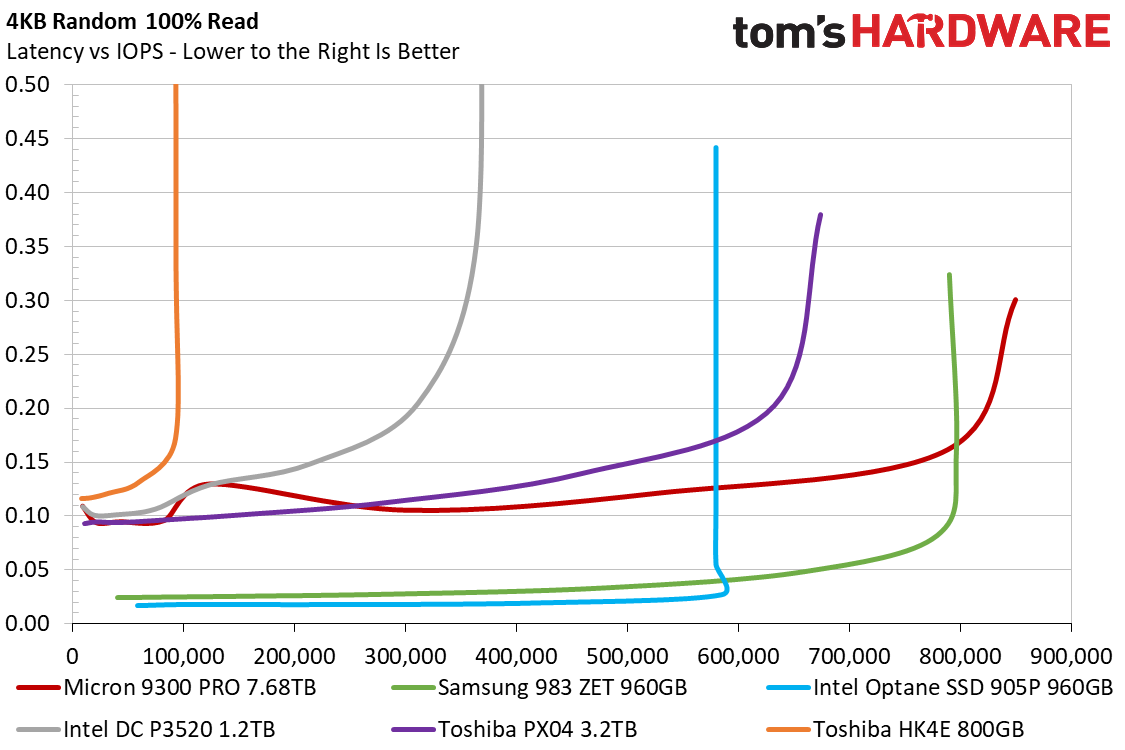
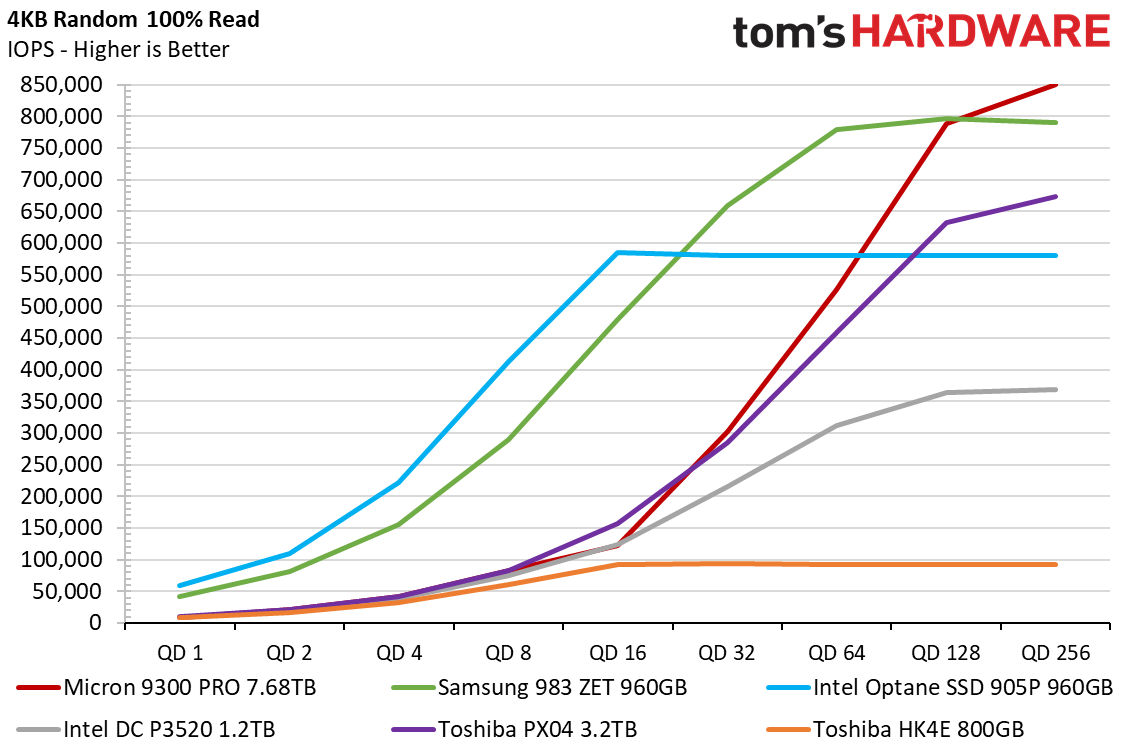
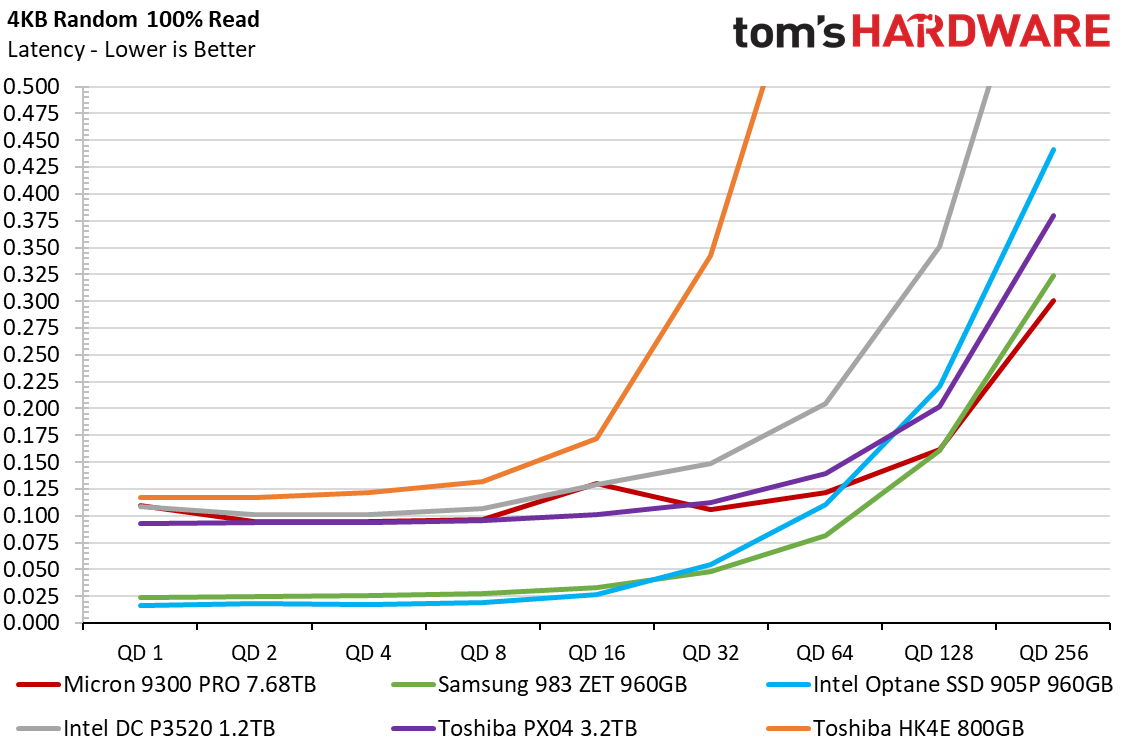
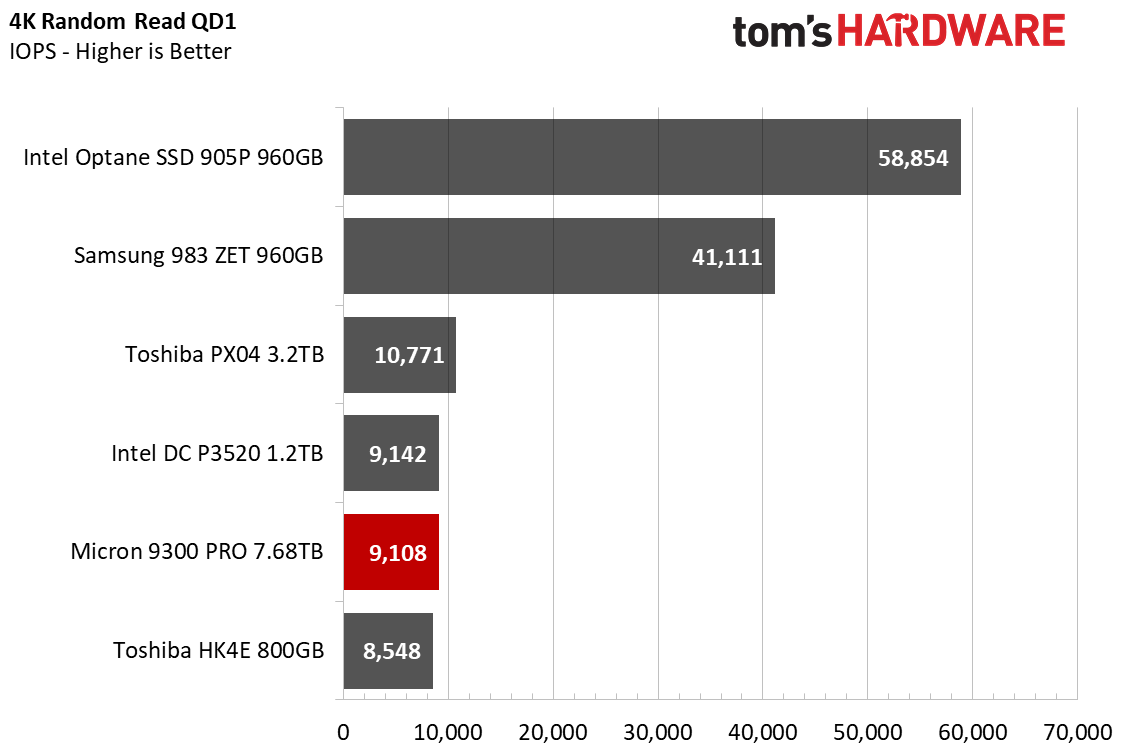

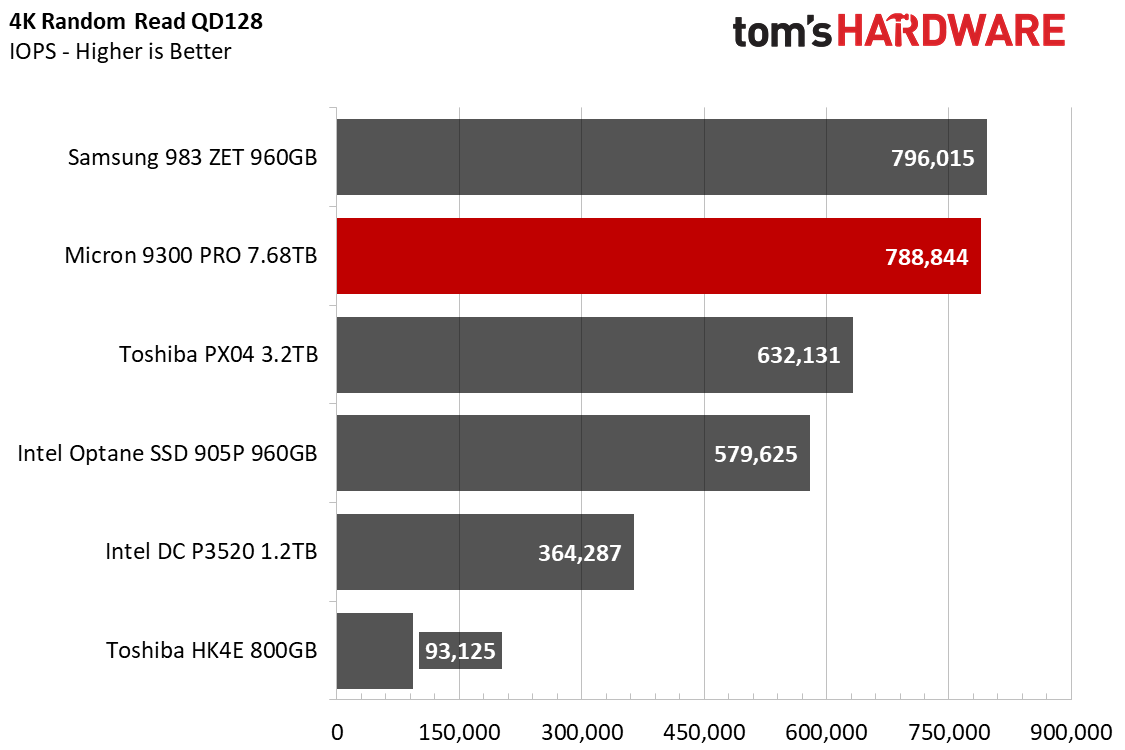

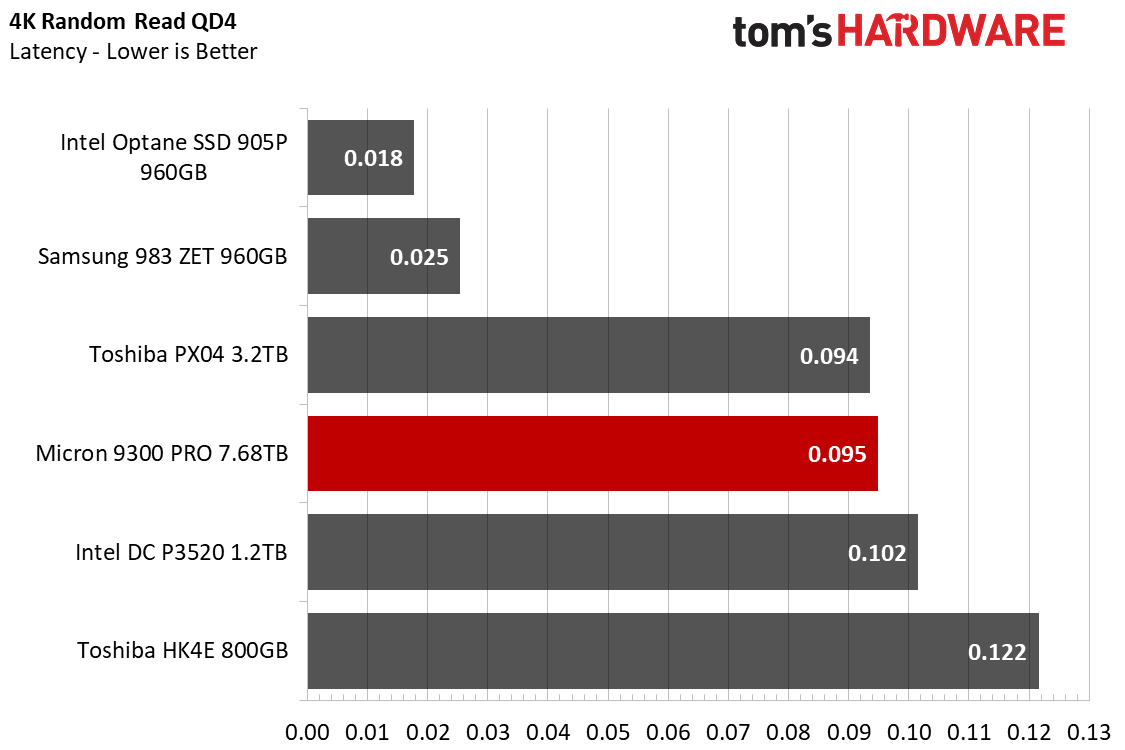

Micron’s 9300 PRO hits a high of 850K IOPS at a queue depth of 256, just as rated. This is higher than both the Intel Optane SSD 905P and the Samsung 983 ZET, even with their faster memories. But, while peak IOPS is higher on the 9300 PRO, these SSDs exhibit a significantly lower latency profile at the low and middle range of our QD sweep. The Samsung drive also surpasses the 9300 PRO up to QD128. The Micron otherwise has very similar performance to the PX04 and DC P3520.
4KB Random Write Performance

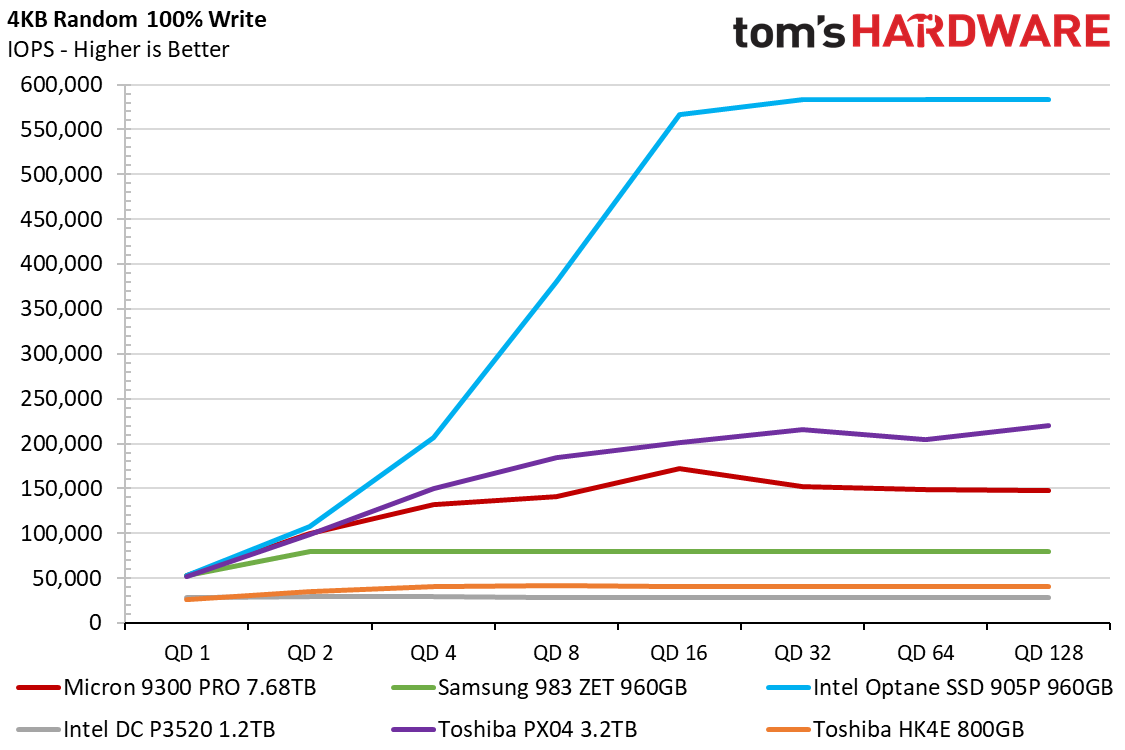

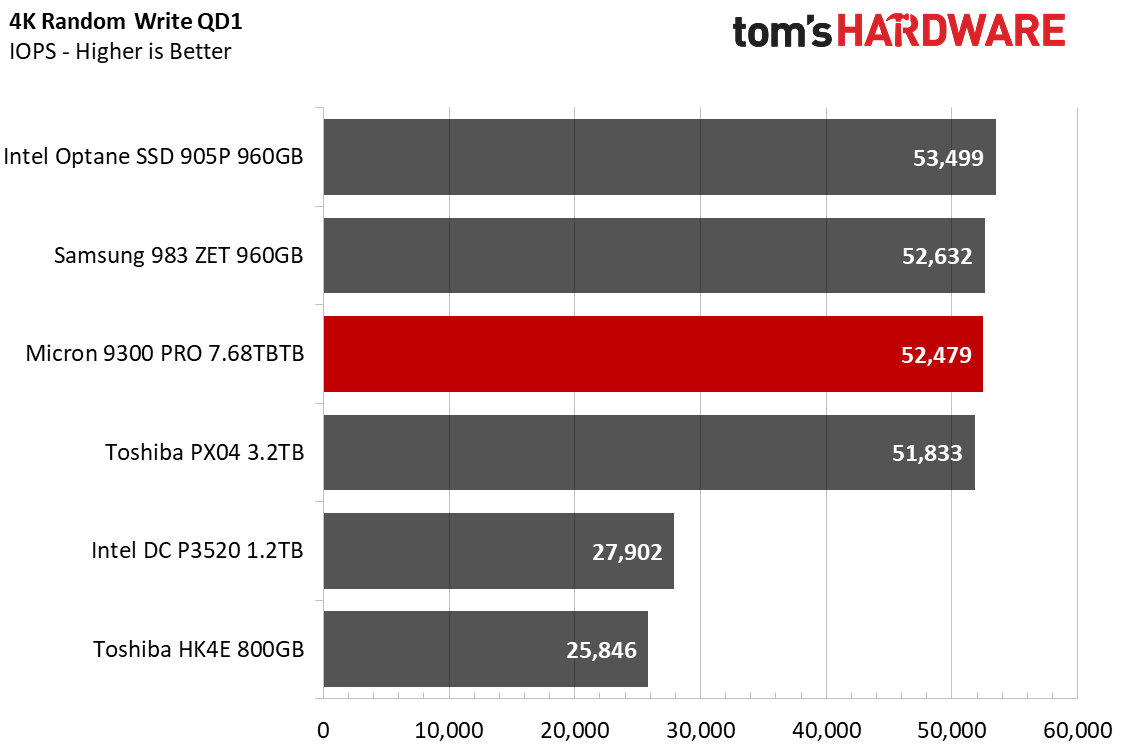
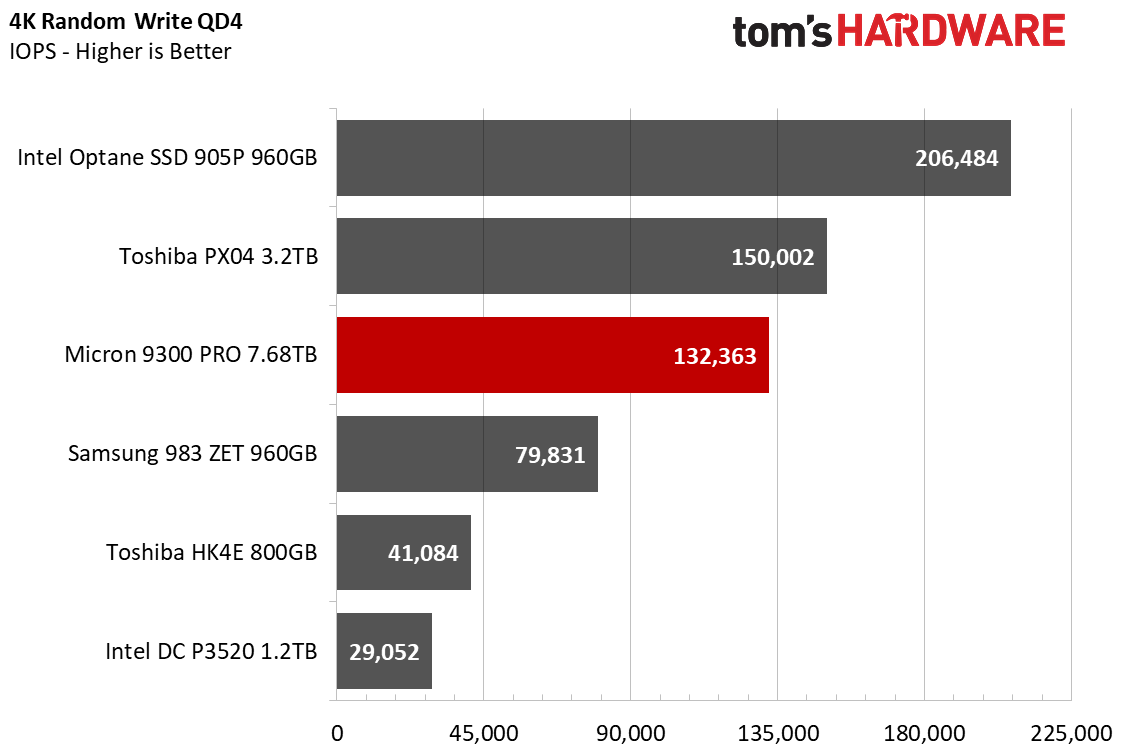
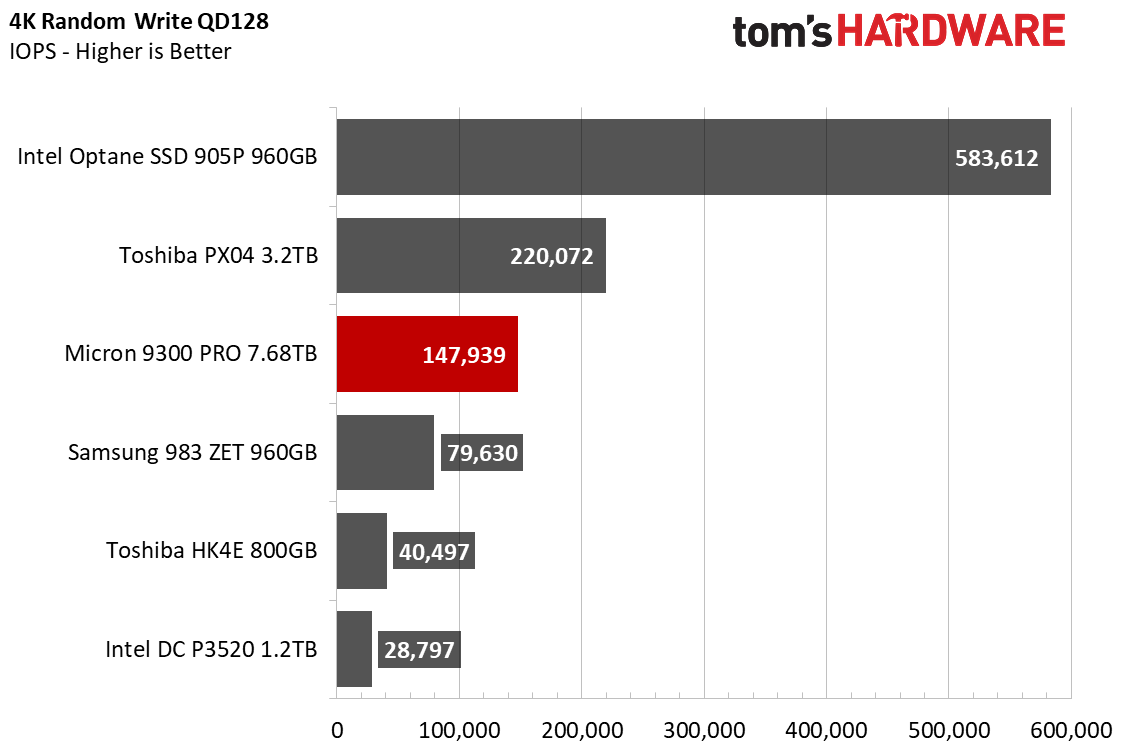



When it comes to pure random writes, Micron’s 9300 PRO can deliver up to 150,000 IOPS. This lands behind both the Intel Optane SSD 905P and Toshiba PX04, but is much faster than the Samsung 983 ZET and others. At QD 1, it ties the Samsung 983 ZET, but leaves it behind at QD2 and beyond.
4KB Mixed Random Performance

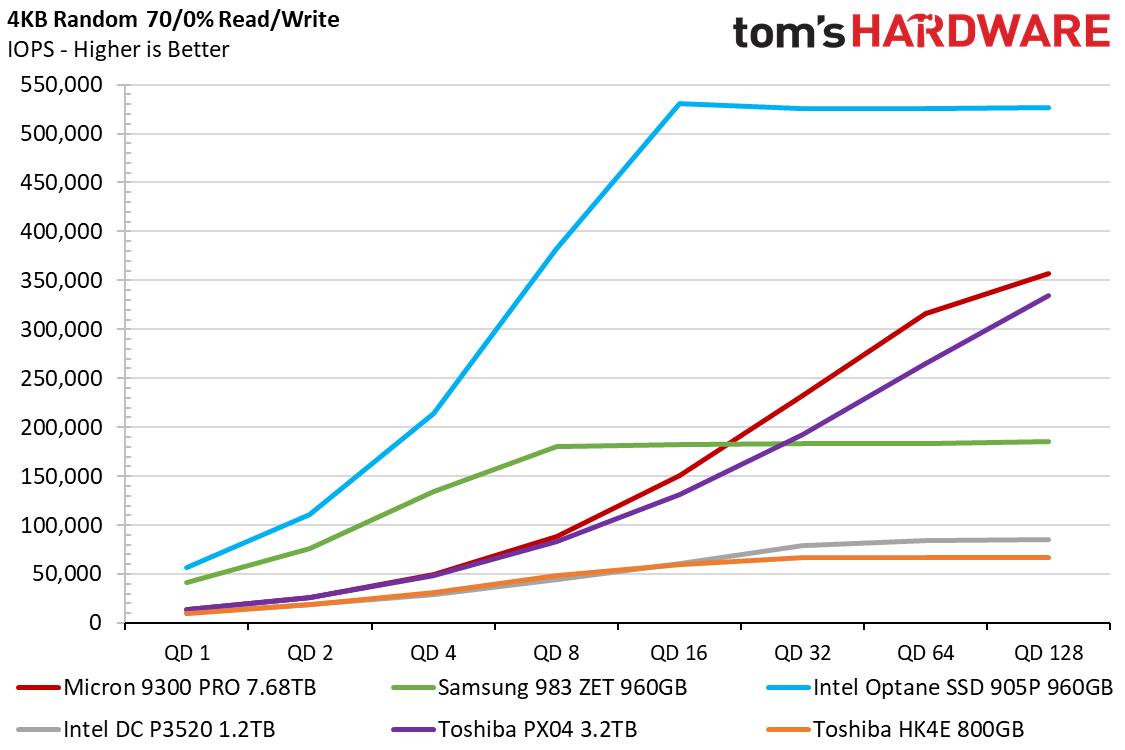

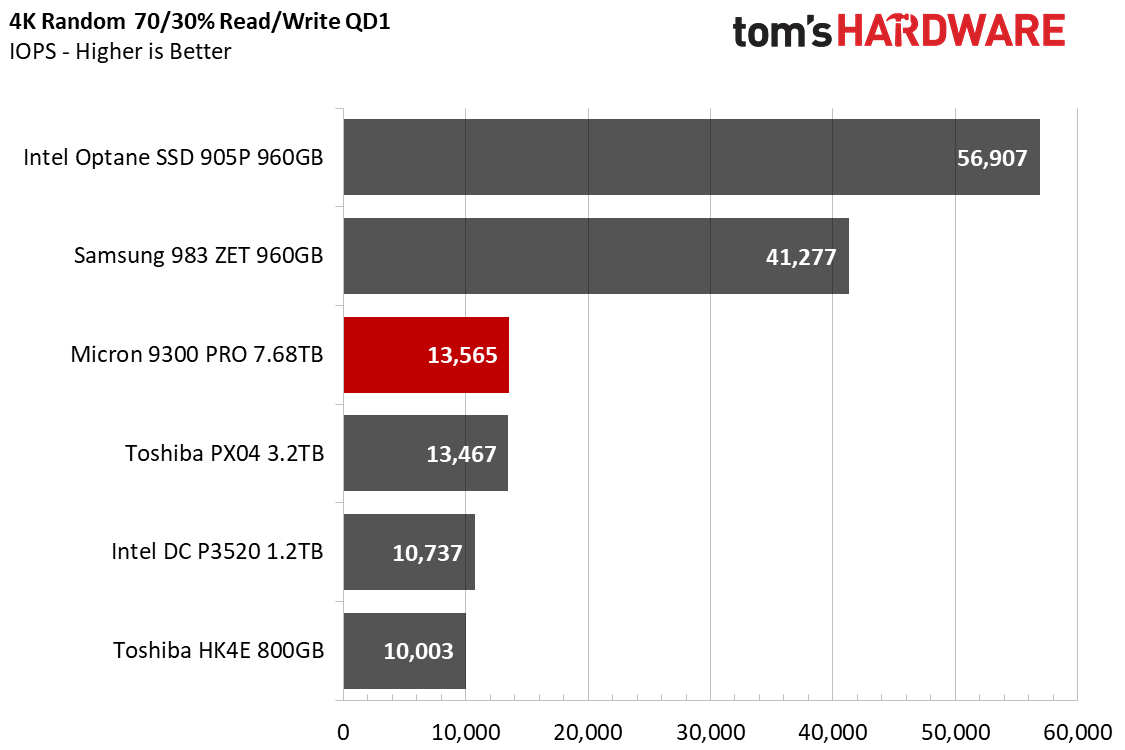
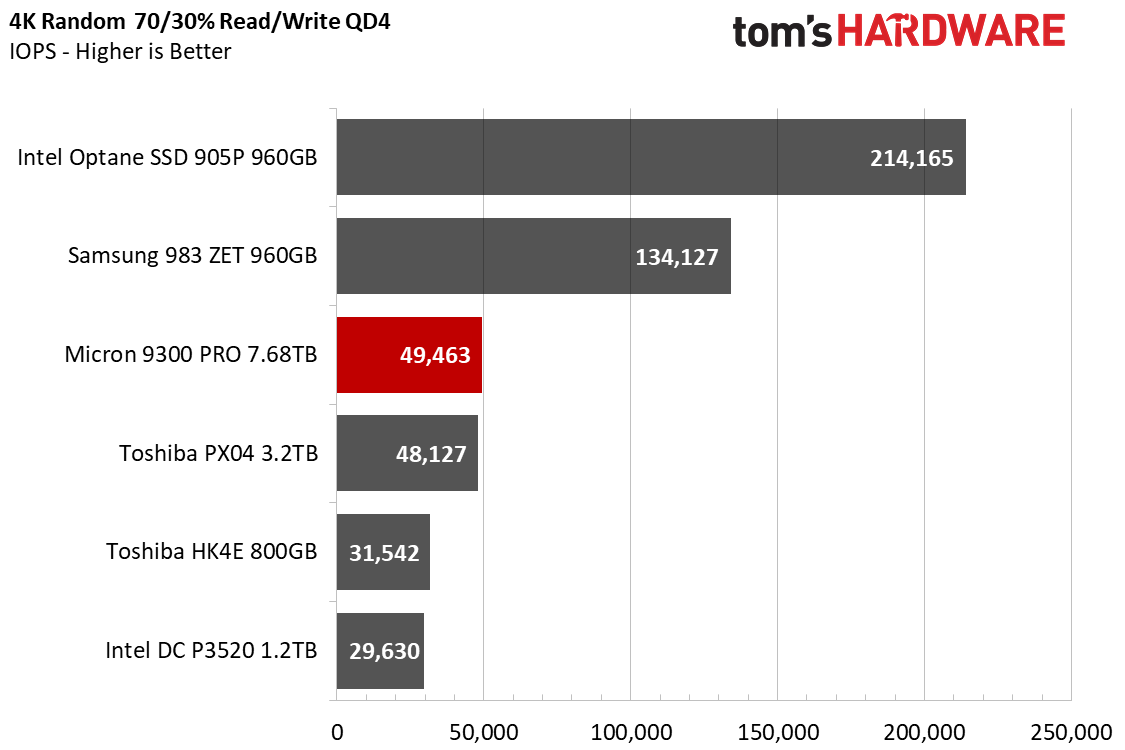
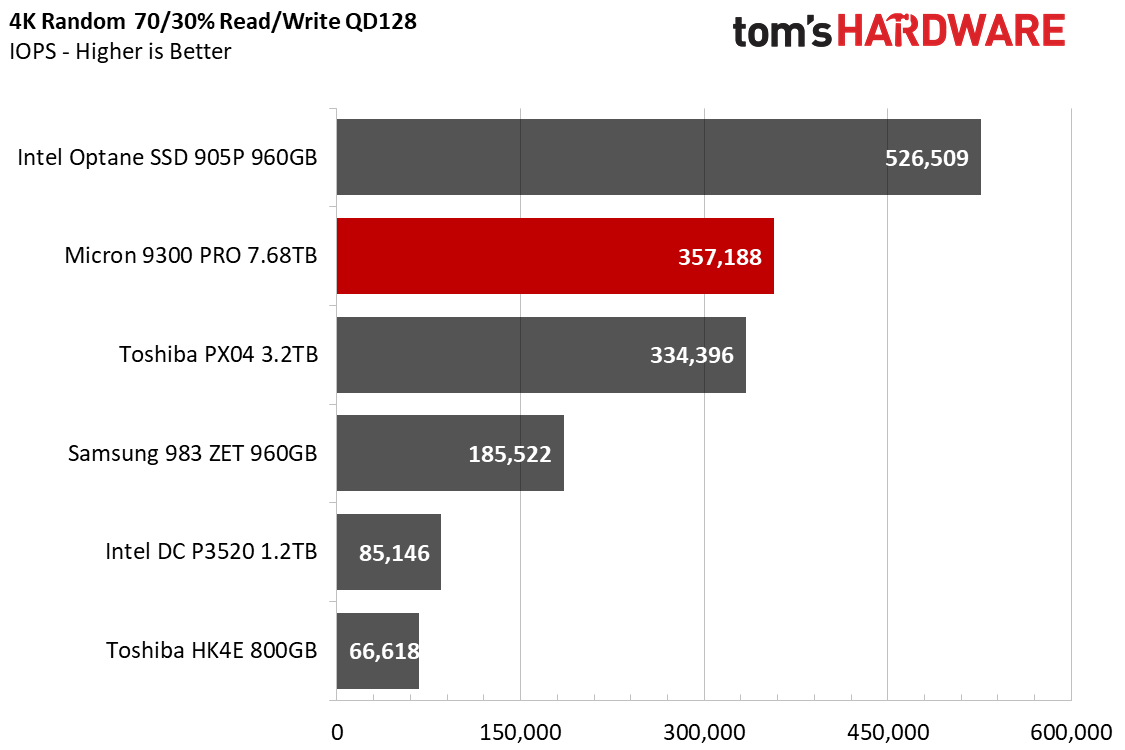


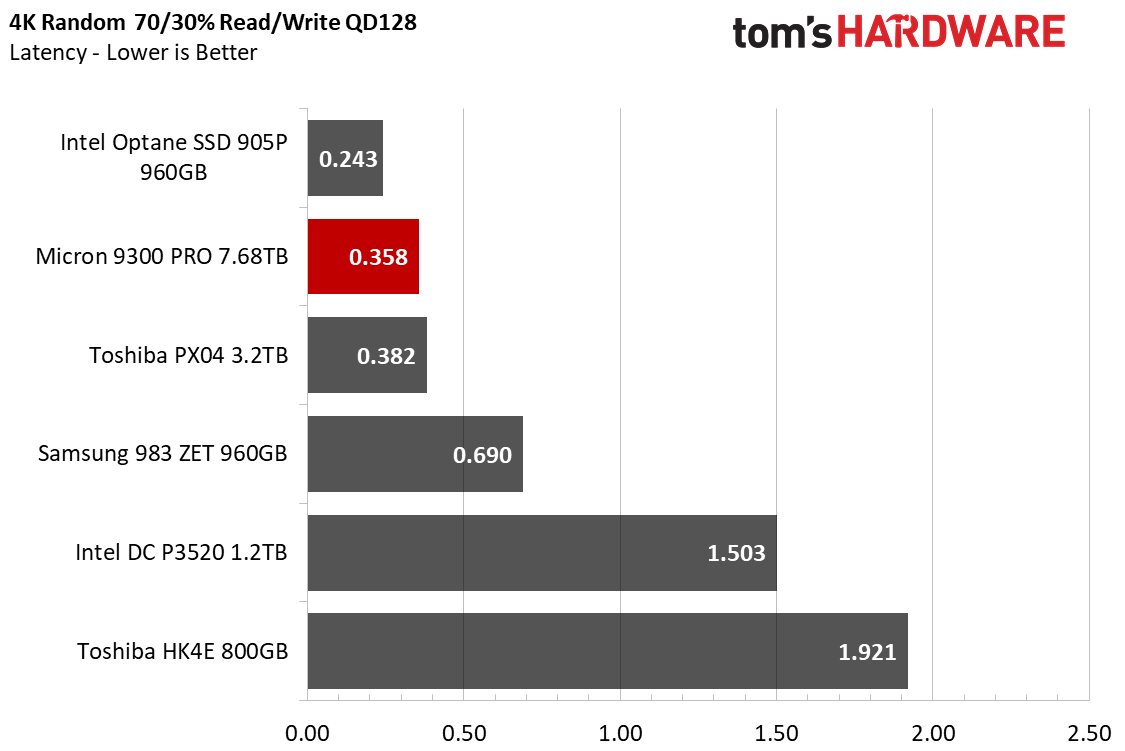

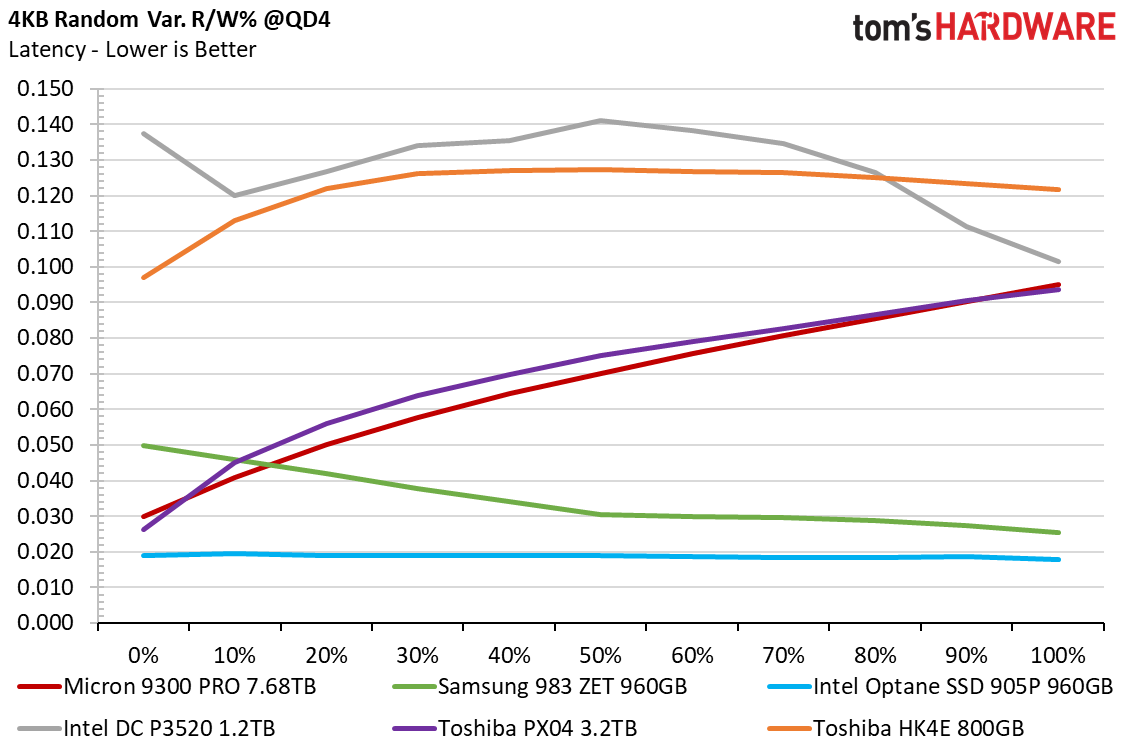
When it comes to mixed performance, the 9300 PRO appears to be a bit less latent than the Toshiba PX04 and DC P3520 up to QD 128, though it is pretty similar to the PX04 overall. The 983 ZET has lower write performance at higher QDs, but even so, at lower QDs, the Micron can’t touch it or Intel Optane’s massive performance. At QD 1-4 these devices display very low latency profiles and offer 3 to 4 times the performance of the 9300 PRO.
4KB Random Power Consumption
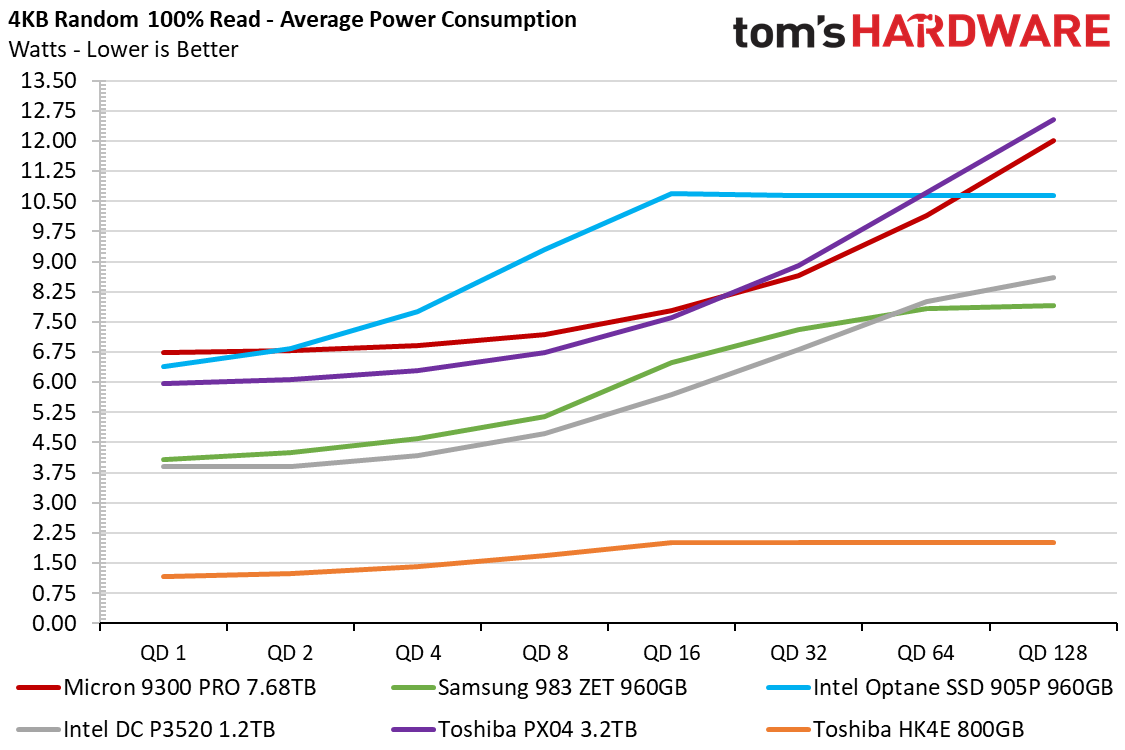
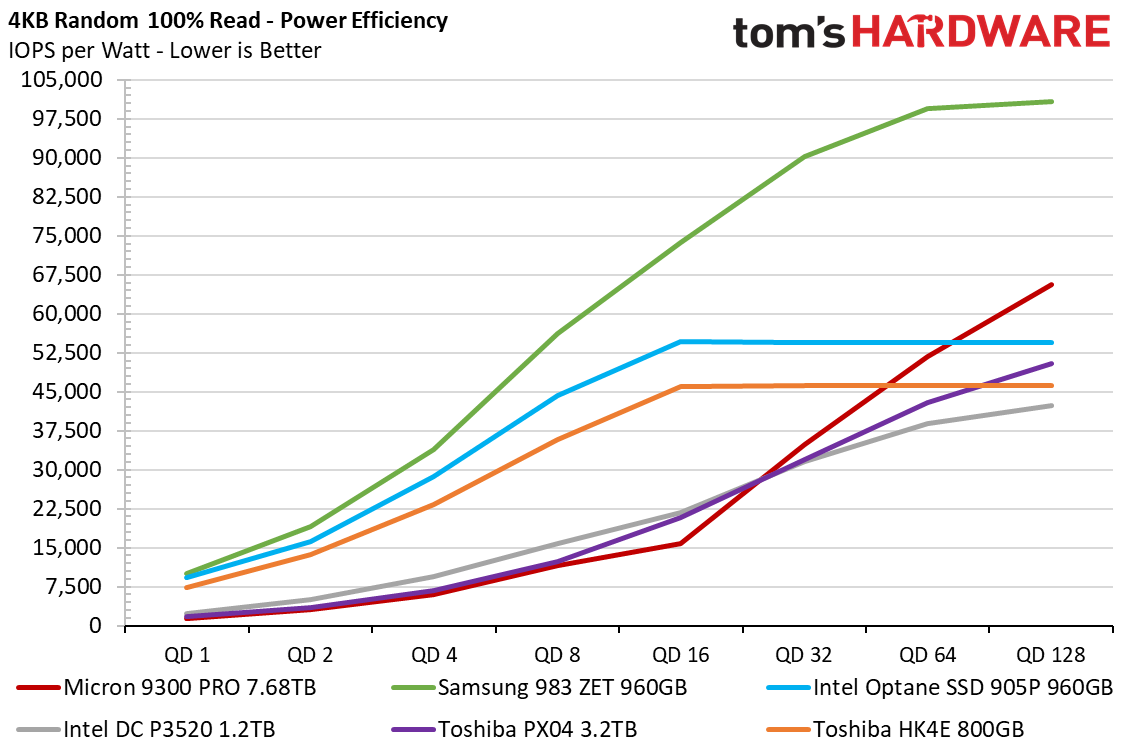
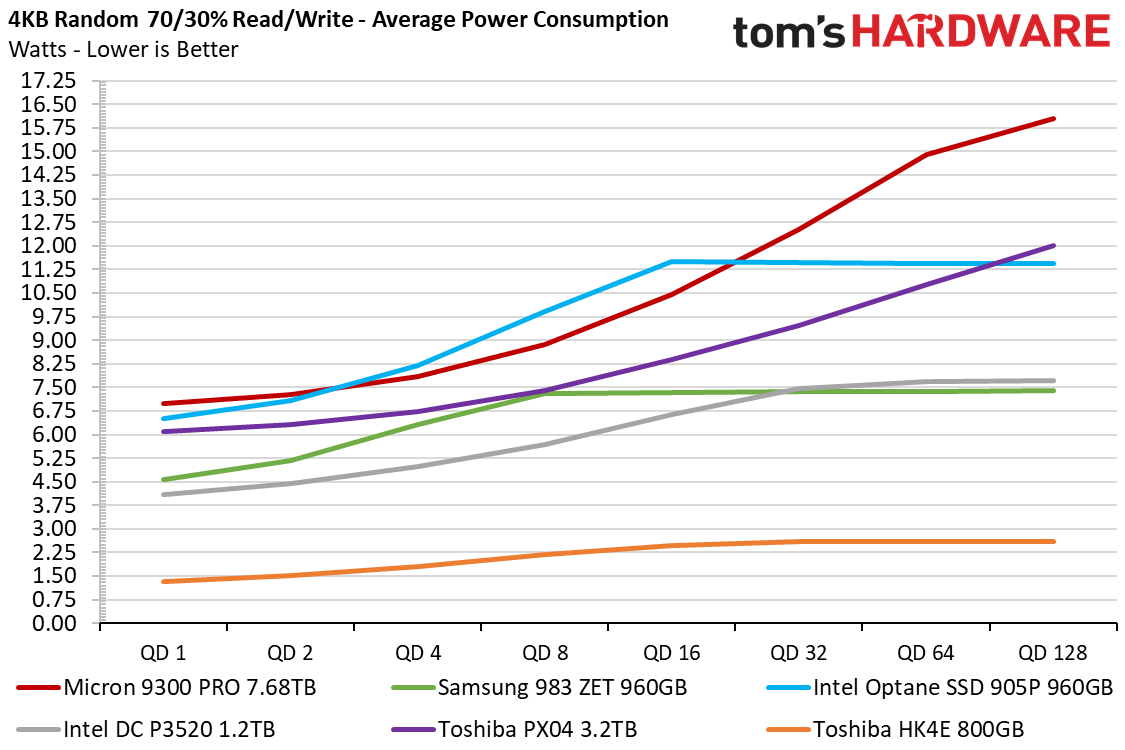
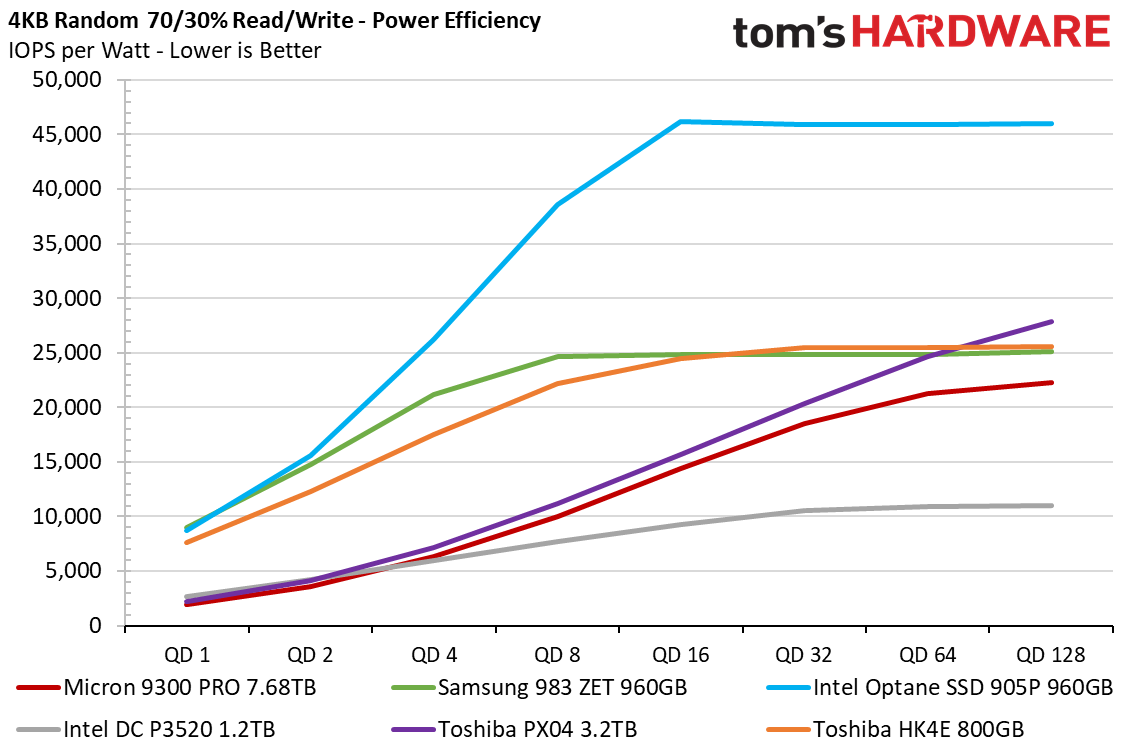



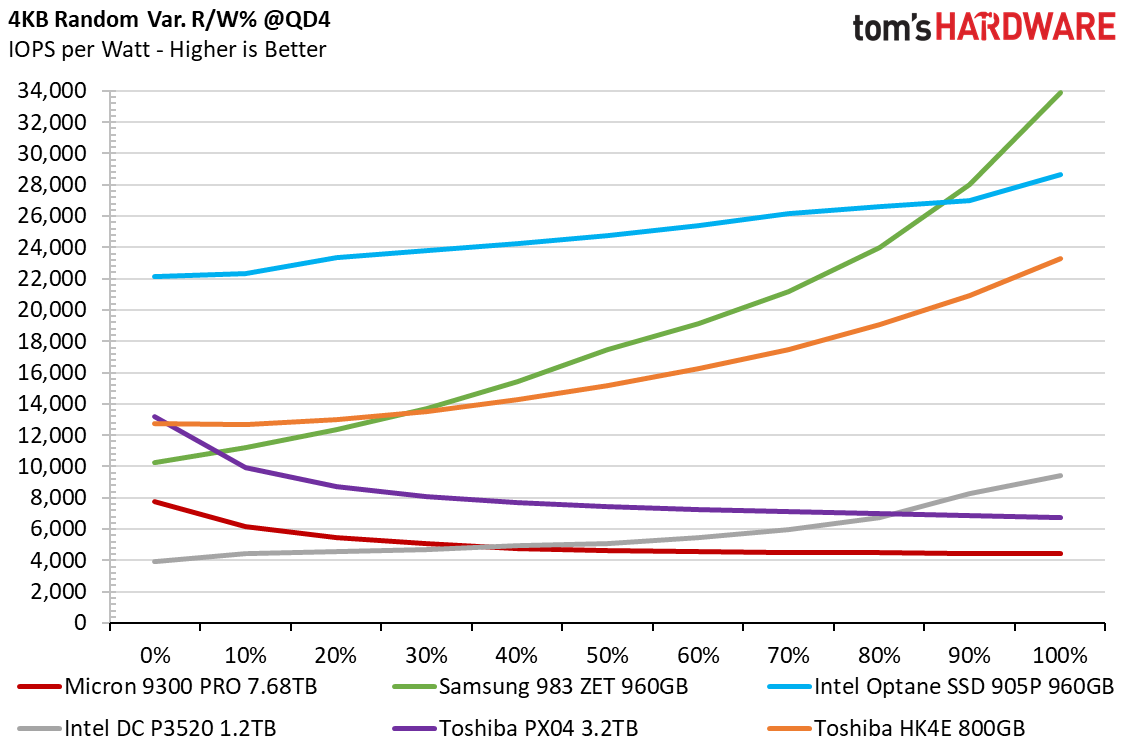
The 9300 PRO is much more efficient in sequential workloads. Micron’s 9300 PRO consumed a peak of 17W during our random 4KB write testing. Hammering it with write-heavy 4KB tasks, the 9300 PRO doesn't have the best efficiency, trailing the Intel DC P3520. But this is to be expected as it has significantly more flash than the comparison drives, and random writes take the biggest toll on the read-optimized drive.
During reads, the 9300 PRO's efficiency was lower than all the drives in our comparison pool up to QD 16, but it improved as performance increased over QDs 16. Beyond QD64, the 9300 PRO outperformed the pack in read efficiency and ranked second to the Samsung 983 ZET.
Latency Distribution and Consistency
When comparing enterprise and data center-class storage, it is always important to not only make sure the product delivers the rated performance from the manufacturer, but also ensure it will deliver a good quality of service. Or in other words, solid performance consistency. There are multiple ways to test the consistency of an SSD, but we chose a rather simple way to display it on a scale from 0-100% by taking the lowest IOPS result and dividing it by the average. We took out chunks of our results at a QD of 4 from 100% write, 70/30% read/write, and 100% read.

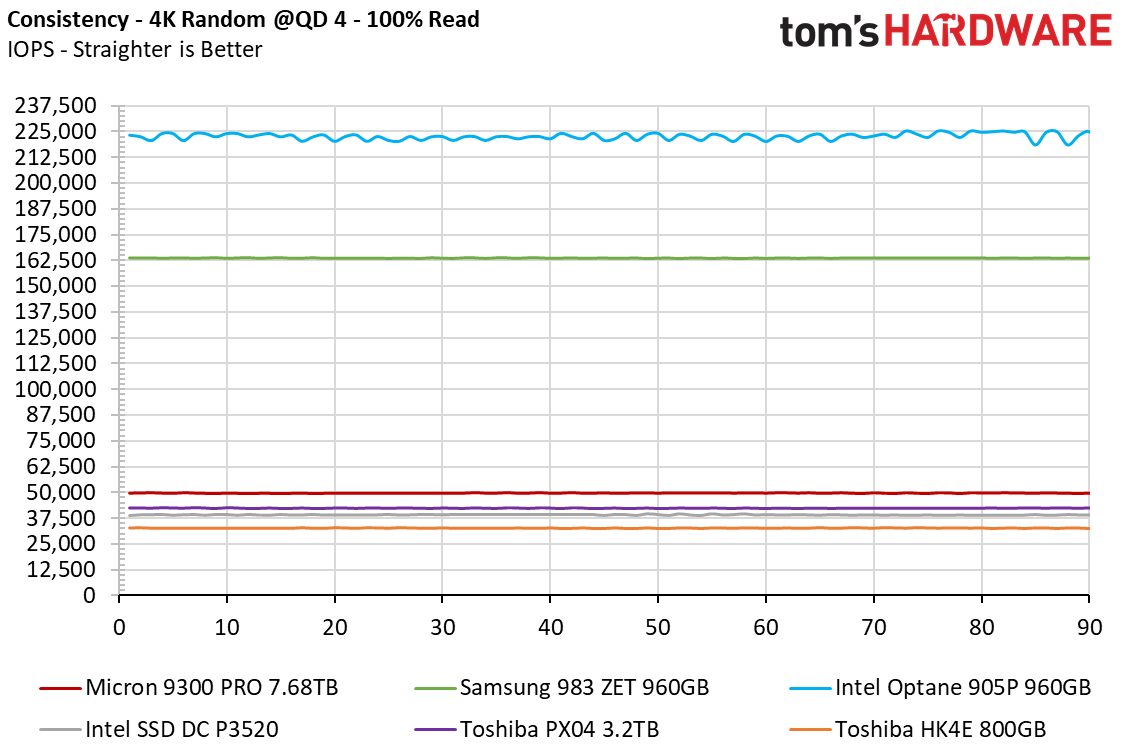
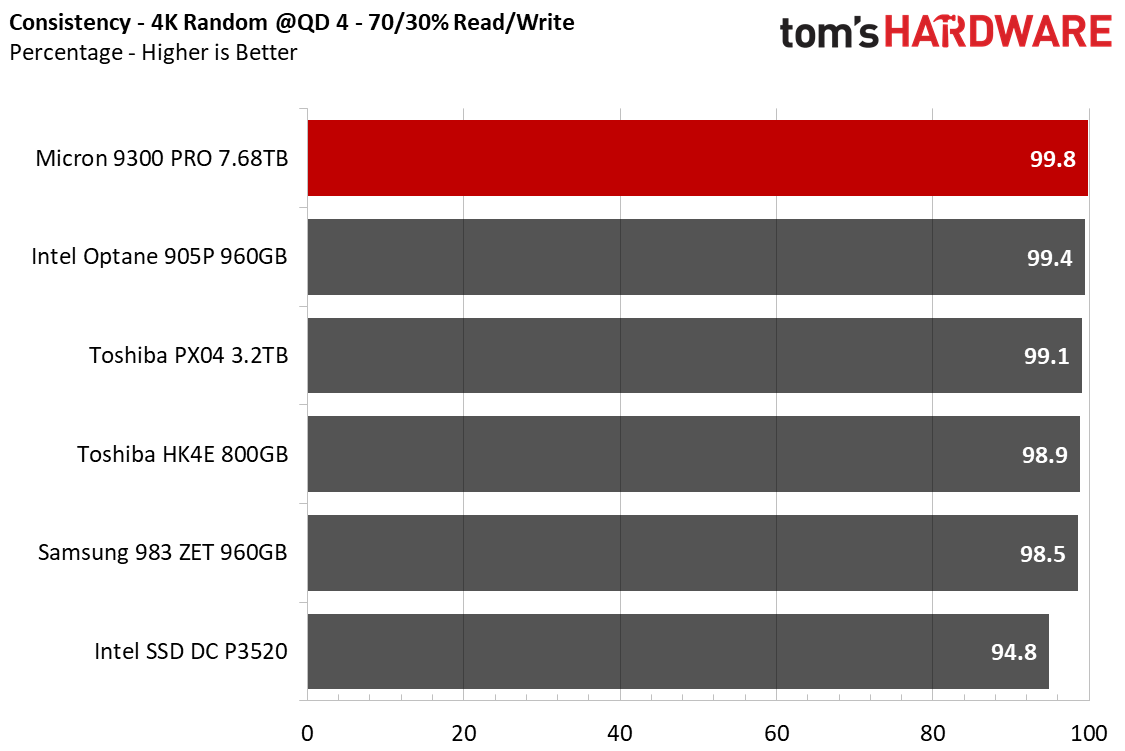

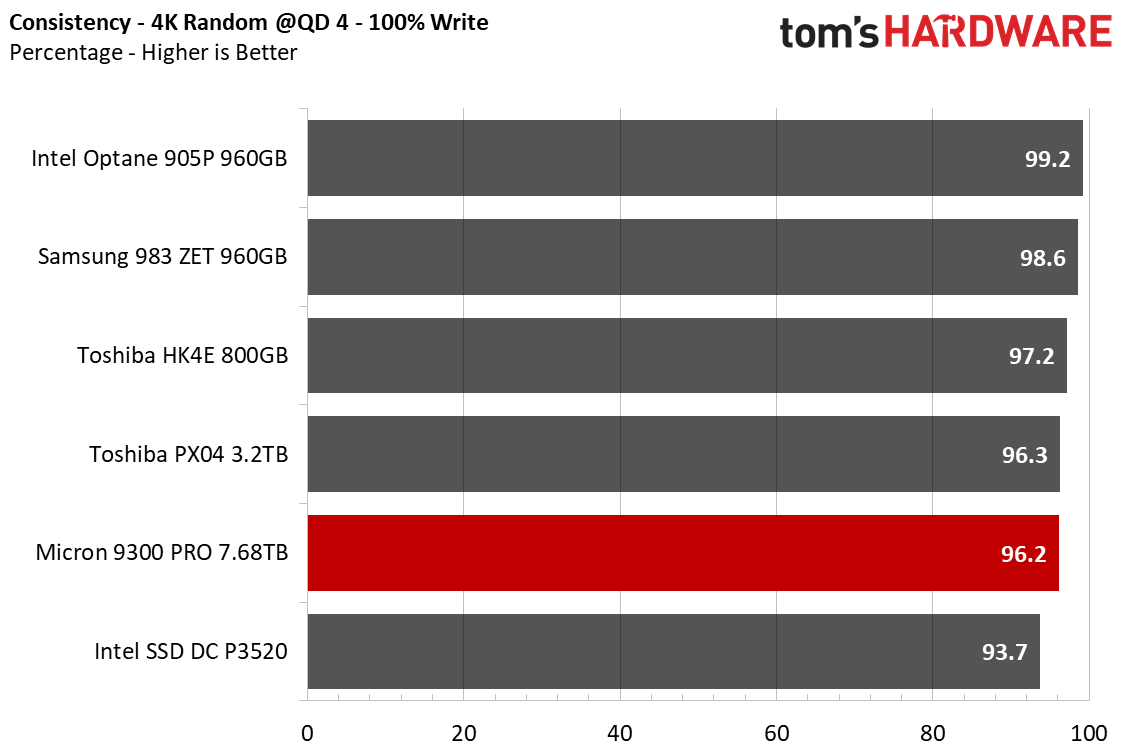
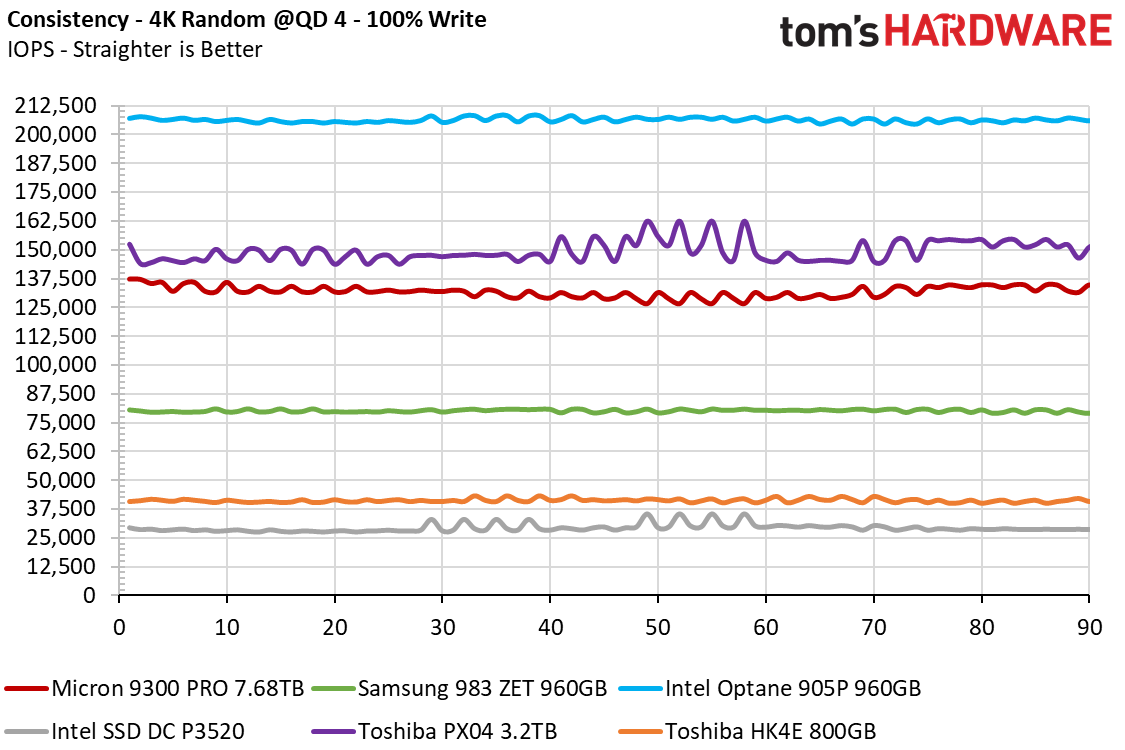

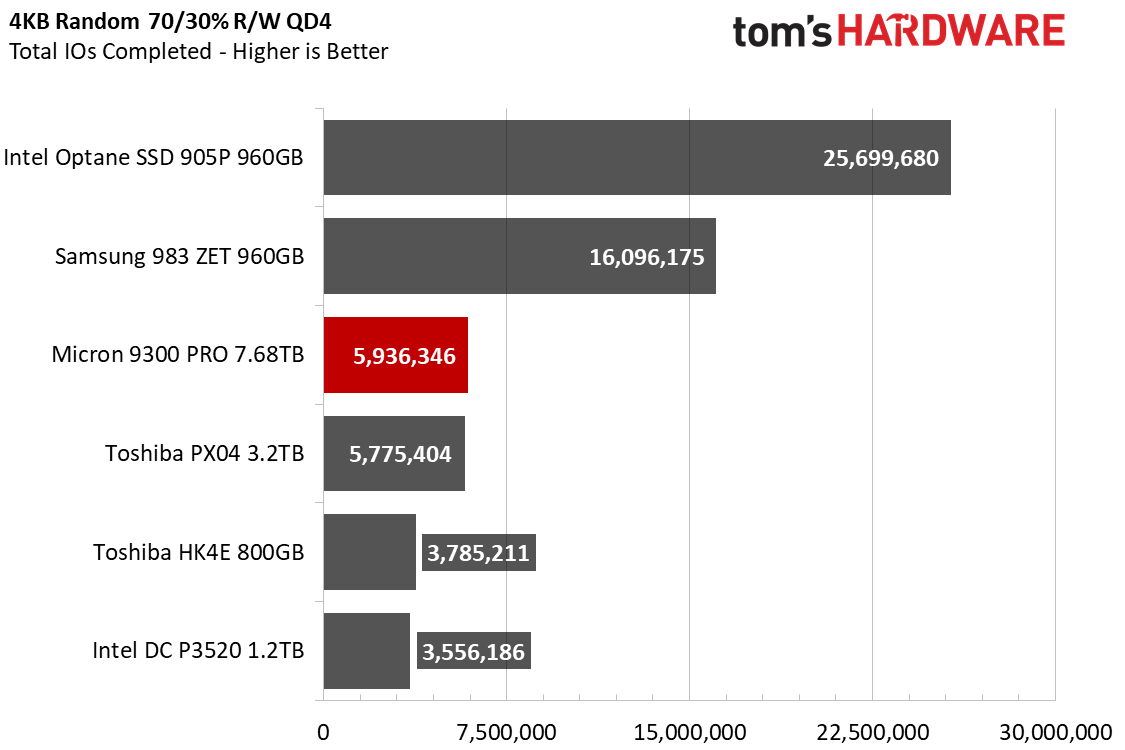
The Micron 9300 PRO delivers exceptional consistency in read and mixed read/write workloads. But, without the extra over provisioning that the 9300 MAX features, it fell behind slightly in random writes, even though consistency is still solid.
Get Tom's Hardware's best news and in-depth reviews, straight to your inbox.
This is also a good time to check out the latency distribution of the multiple SSDs and interfaces we have in our comparison pool. Ideally, the fastest drives will have the majority of their latency results fall into lower brackets and will complete more operations overall.
It’s easy to see that Intel Optane memory is in a league of its own, although Samsung’s Z-NAND does a pretty good job at keeping up with its ultra-low latency design. Conventional 3D TLC, both 3D and planar, can deliver similar latency results to one another. The Micron 9300 PRO proves to be just slightly less latent than the PX04 at QD 4 during a 70/30% read/write test.
MORE: Best SSDs
MORE: How We Test HDDs And SSDs
MORE: All SSD Content
Current page: 4KB Performance Results
Prev Page Micron 9300 Sequential Performance Results Next Page Conclusion
Sean is a Contributing Editor at Tom’s Hardware US, covering storage hardware.